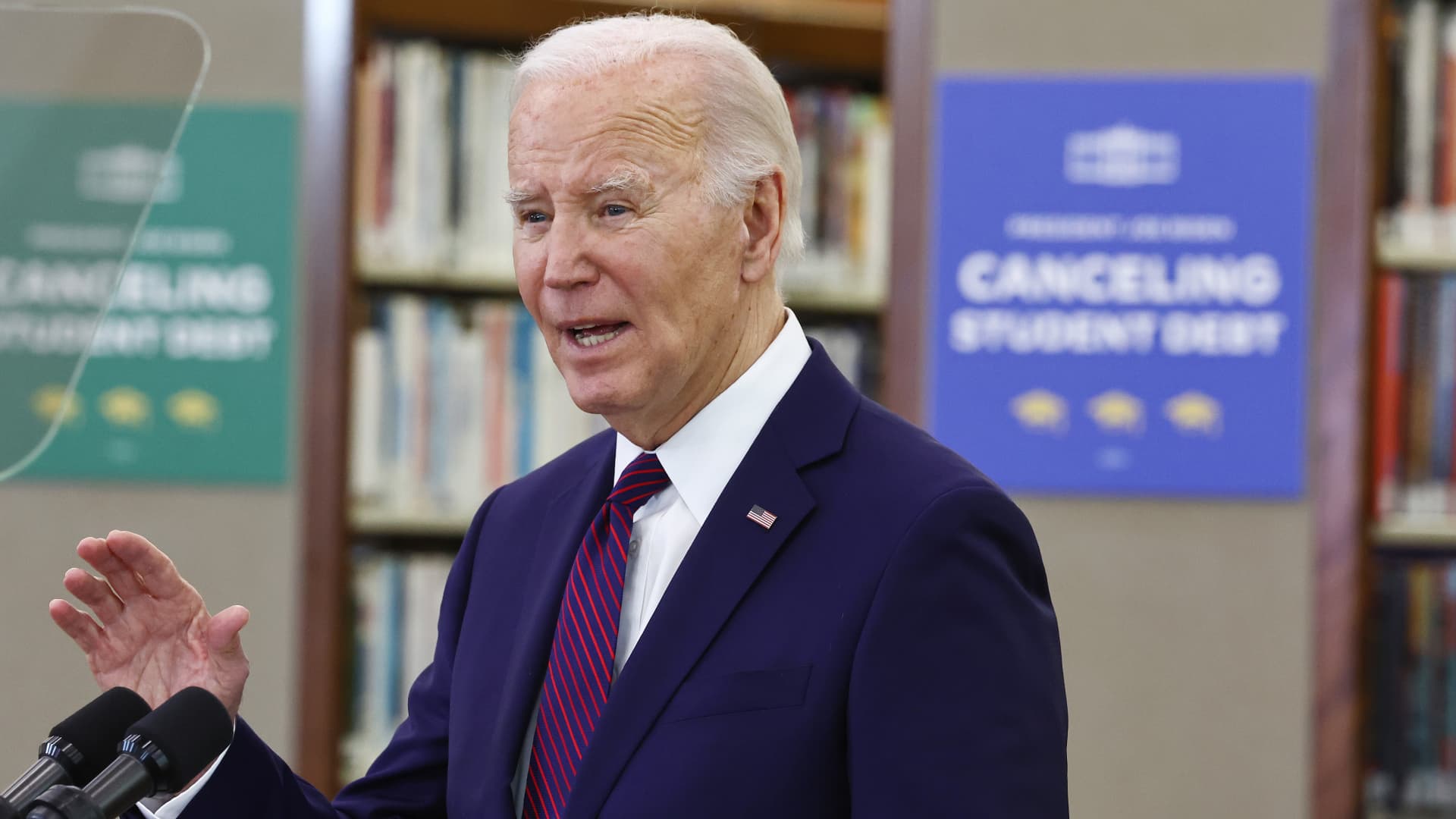The Biden administration will soon roll out a sweeping new student loan forgiveness proposal that could impact millions of Americans.
Despite its smaller scope than President Joe Biden‘s first education debt relief plan that the Supreme Court ultimately blocked, this new aid package could still forgive the debt for as many as 10 million Americans, according to one rough estimate by higher education expert Mark Kantrowitz.
Biden is planning to provide details of his new debt forgiveness plan during a speech Monday in Madison, Wisconsin, The Wall Street Journal reported on Friday.
The president likely wants to start forgiving debt for many student borrowers ahead of the election in November.
Almost half of all voters, or 48%, say canceling student loan debt is an important issue to them in the 2024 presidential and congressional elections, a recent survey found.
Forgiving student debt could especially help Biden with young voters, a demographic he’s been struggling with. Around 70% of Gen Z respondents said student debt cancelation was important to them in the election.
More from Personal Finance:
Top colleges expand financial aid awards to eliminate student loans
What you need to know about Social Security’s new overpayment policies
What car shoppers need to know
A narrower aid package Biden hopes will survive
The president’s Plan B for student loan forgiveness will likely target several groups of borrowers, including those who’ve been in repayment for decades and people who are experiencing financial hardship.
Immediately after the Supreme Court struck down Biden’s $400 billion student loan forgiveness plan last June, his administration began working on a revised assistance package.
The Biden administration believes its updated plan will survive legal challenges this time for several reasons. One, it’s far narrower than its first attempt, which would have impacted as many as 40 million Americans.
“I think it would be easier to justify in front of a court that is skeptical of broad authority,” said Luke Herrine, an assistant professor of law at the University of Alabama, in an earlier interview with CNBC.
It is also using a different law — the Higher Education Act rather than the Heroes Act of 2003 — as its legal justification.
The HEA was signed into law by President Lyndon B. Johnson in 1965, and allows the education secretary some authority to waive or release borrowers’ education debt.
The Heroes Act was passed in the aftermath of the 9/11 terrorist attacks, and grants the president broad power to revise student loan programs during national emergencies.
The conservative justices didn’t buy that argument.
″’Can the Secretary use his powers to abolish $430 billion in student loans, completely canceling loan balances for 20 million borrowers, as a pandemic winds down to its end?'” Chief Justice John Roberts wrote in the majority opinion for Biden v. Nebraska. “We can’t believe the answer would be yes.”
Lastly, the Biden administration has now turned to the rulemaking process to deliver its relief. The president previously attempted to cancel the debt through executive action.
As part of the rulemaking process, a team of negotiators met four times to try to establish the new parameters of the updated policy. The final session concluded in February.
Based on the timeline of regulatory changes, the proposal will likely become public within weeks, Kantrowitz said.
“Typically at the end of the negotiated rulemaking, a month or so later you have publication of the proposal,” he said.
There will then be a public comment period, which is likely to last for at least 30 days.
